
As you walk through the streets of Italy, the tempting aromas wafting from every corner will undoubtedly ignite your senses. You’ll catch the rich scent of fresh herbs, the hearty aroma of slow-cooked meats, and the sweet aroma of freshly baked bread. Such is the allure of Italian cuisine.
Italian food is all about simple, flavorful, and fresh ingredients. Each dish is crafted with precision and care, allowing the flavors of the individual ingredients to shine through. From the creamy richness of risotto to the tangy sweetness of tomato sauce, every bite is a journey through the many flavors of Italy.
Perhaps the most defining feature of Italian cuisine is the use of fresh, high-quality ingredients. Olives, tomatoes, garlic, and basil are staples in many Italian dishes, and for good reason: they produce a range of complex and delicious flavors that are impossible to resist.
Additionally, Italian cuisine is renowned for its emphasis on regional specialties. Each region of Italy has its own unique culinary traditions and ingredients, making for a diverse and exciting culinary experience. Whether you’re enjoying the seafood dishes of the coastal region of Puglia or the hearty meat dishes of Tuscany, there is always something new and exciting to discover in Italian cuisine.
So why not indulge your senses and explore the many flavors of Italy? From packed pasta dishes to melt-in-your-mouth desserts, there is something to satisfy every taste bud. Discover the art of Italian cooking and experience the magic of its delicious and authentic cuisine. Buon appetite!
Regional Cuisines of Italy
From the North to the South, every region in Italy boasts its own unique cuisine. Here are some of the most popular regional cuisines of Italy:
Piedmont cuisine
Located in the North-Western part of Italy, Piedmont is famous for its truffles, cheese, and wine. Some of the notable Piedmontese dishes include agnolotti pasta filled with meat and vegetables, vitello tonnato (veal in tuna sauce), and bagna cauda (hot garlic and anchovy dip).
Tuscan cuisine
Tuscany is located in Central Italy and is famous for its simple yet flavorful dishes. Some of the most popular Tuscan dishes include Bistecca alla Fiorentina (grilled T-bone steak), ribollita (vegetable and bread soup), and cantucci (almond cookies).
Campania cuisine
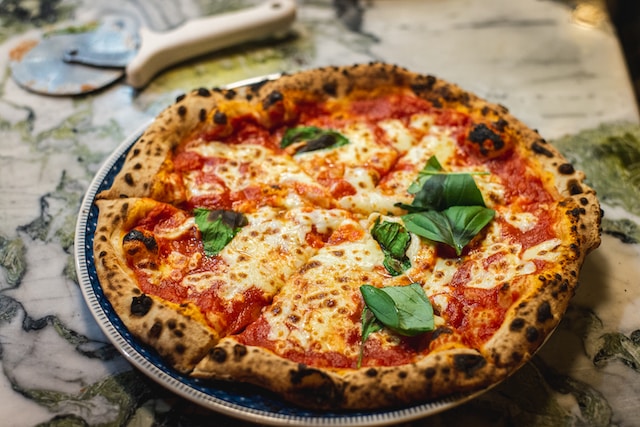
Located in Southern Italy, Campania is renowned for its pizza and seafood dishes. Some of the popular dishes from this region include Pizza Margherita (tomato, mozzarella, and basil pizza), spaghetti alle vongole (spaghetti with clams), and insalata di mare (seafood salad).
Emilia-Romagna cuisine
Located in Northern Italy, Emilia-Romagna is known as the food capital of Italy. It is famous for its cured meats, cheese, and pasta dishes. Some of the notable dishes from this region include tagliatelle alla Bolognese (pasta with meat sauce), tortellini in brodo (meat-filled pasta in broth), and piadina (flatbread).
Apulian cuisine
Situated in Southern Italy, Apulia’s cuisine is all about seafood dishes. Some of the popular Apulian dishes include orecchiette alle cime di rapa (pasta with broccoli rabe), tiella di riso, patate e cozze (rice, potato, and mussel casserole), and polpo alla pignata (octopus cooked in a clay pot).
No matter which region’s cuisine you try, you’ll find that Italian food is a delicacy to be savored and cherished.
Essential Italian Ingredients
Fresh and high-quality ingredients are at the heart of Italian cuisine. Here are some essential Italian ingredients that are commonly used:
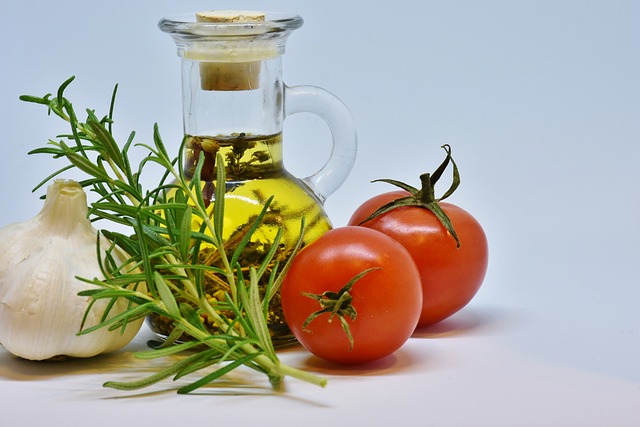
Olive Oil: Olive oil is a staple in Italian cuisine and is used in everything from salad dressings to pasta sauces. Extra virgin olive oil is the highest quality and most flavorful type.
Tomatoes: Tomatoes are used in many Italian dishes, from pizza to pasta sauce. San Marzano tomatoes, grown in the Campania region, are considered the best for sauces.
Garlic: Garlic is used to add flavor to many Italian dishes. It can be minced, chopped, or sliced and added to sauces, pasta dishes, and soups.
Basil: Fresh basil is a key ingredient in many Italian dishes, especially in pasta sauces and pesto.
Parmesan Cheese: Parmesan cheese is a hard, salty cheese that is grated and used to add flavor to pasta dishes, soups, and salads.
Mozzarella Cheese: Mozzarella cheese is a soft, mild cheese that is used in pizza and many pasta dishes.
Prosciutto: Prosciutto is a thinly sliced, cured ham that is often added to salads or sandwiches.
Balsamic Vinegar: Balsamic vinegar is a sweet and tangy vinegar that is used in dressings and marinades.
Arborio Rice: Arborio rice is a short-grain rice that is used to make risotto, a popular Italian dish.
Capers: Capers are small, salty buds that are often added to pasta dishes and sauces for flavor.
These essential Italian ingredients are the building blocks of many delicious Italian dishes. Using high-quality, fresh ingredients is the key to creating authentic and flavorful Italian cuisine.
Classic Italian Dishes
When it comes to classic Italian dishes, there are few cuisines that rivals its popularity. From savory pasta dishes to authentic seafood plates, Italian cuisine has a treasure chest full of delicious and iconic dishes that have earned their place in the culinary world. If you are looking for some of the most beloved and timeless Italian dishes that are sure to satisfy your cravings, look no further than this list of classics:
Pasta Carbonara
This simple and flavorful pasta dish originated in Rome and is made with eggs, cheese, guanciale or pancetta, and black pepper. It has become an extremely popular dish, known for its creamy and indulgent taste.
Margherita Pizza
One of the most popular types of Italian pizza, the Margherita pizza features a thin crust, tomato sauce, mozzarella cheese, and fresh basil. It has become a world-famous dish that represents Italian cuisine around the globe.
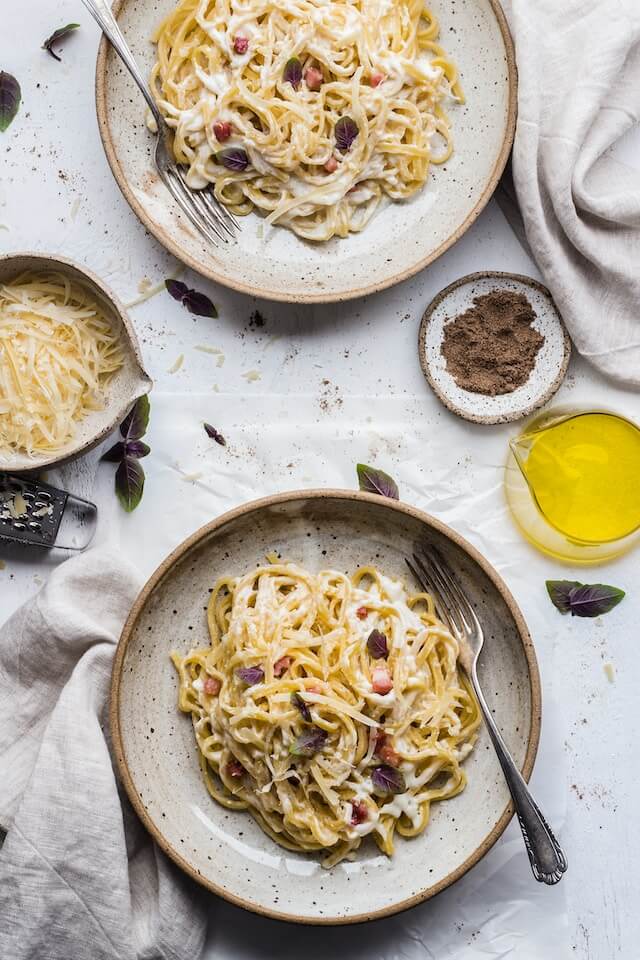
Risotto
This classic Italian rice dish is cooked with broth, butter, and Parmesan cheese. The combination of these ingredients creates a delicious, creamy, and fulfilling meal that is often flavored with vegetables or meat.
Bruschetta
Originating from the central region of Italy, this delicious antipasto dish is made with grilled bread topped with fresh tomatoes, olive oil, garlic, and basil. It’s simple and refreshing and makes for an excellent appetizer.
Lasagna
This classic layered pasta dish is made with ground meat, tomato sauce, mozzarella cheese, and béchamel sauce. It is a traditional Italian comfort food that is perfect for dinner parties and family gatherings.
Osso Bucco
This popular northern Italian dish is made with veal shanks that are braised with vegetables, white wine, and broth. The combination of these ingredients produces a rich and flavorful dish that is perfect for a cozy dinner.
Tiramisu
This delicious dessert combines layers of espresso-drenched ladyfingers, mascarpone cheese, and cocoa powder. It is a classic Italian dessert that is perfect for special occasions or as a sweet treat after dinner.
Pizza and Pasta Varieties
Italian cuisine has given us a variety of pizza and pasta dishes that are popular around the world. From the regional variations of pizza to the different styles of pasta, there is a never-ending range of Italian delicacies to enjoy.
Neapolitan Pizza
Named after the city of Naples, this pizza has a soft, chewy crust and is topped with San Marzano tomatoes, fresh mozzarella cheese, fresh basil, and olive oil. It is considered the most traditional and authentic pizza in Italy.
Sicilian Pizza
Originating from Sicily, this pizza has a thicker crust and is often rectangular in shape. It is topped with tomato sauce and cheese, and sometimes vegetables or meat.

Spaghetti
This long, thin pasta is a staple in Italian cuisine. It is typically served with tomato sauce or other savory sauces, and sometimes with meatballs.
Fettuccine Alfredo
Fettuccine pasta served with a rich and creamy Alfredo sauce made with butter, cream, and Parmesan cheese. It is a decadent and indulgent dish that is sure to please any pasta lover.
Lasagna
Layers of wide pasta noodles, tomato sauce, meat, and cheese are baked to create this classic Italian comfort food.
Ravioli
Small pockets of pasta filled with a variety of ingredients, such as cheese, meat, or vegetables. They can be served with a variety of sauces, from tomato to creamy Alfredo.
Cannelloni
Similar to ravioli, cannelloni is a tube-shaped pasta that is filled with a variety of ingredients. It is often served with tomato sauce or béchamel sauce.
No matter which type of pizza or pasta you prefer, Italian cuisine offers a wide range of dishes to suit every palate.
Italian Sauces and Condiments
Italian cuisine boasts some of the most delicious and flavorsome sauces and condiments in the world. Here are some of the most popular Italian sauces and condiments that you can add to your meals:
Marinara Sauce: Made with tomatoes, garlic, and herbs, marinara sauce is a staple in Italian cuisine. It is perfect for pasta dishes and as a dipping sauce for breadsticks.
Béchamel Sauce: Also known as white sauce, béchamel is made with butter, flour, and milk. It is often used in lasagna and cannelloni dishes.
Tomato Sauce: Tomato sauce is a simple but flavorful sauce that is used in many Italian dishes. It can be made with fresh or canned tomatoes, garlic, and herbs.
Alfredo Sauce: A rich and creamy sauce made with butter, cream, and Parmesan cheese, Alfredo sauce is a popular addition to fettuccine pasta.
Aglio e Olio: Aglio e Olio is a simple and delicious garlic and oil sauce that goes well with many pasta dishes.
Gremolata: A blend of fresh parsley, garlic, and lemon zest, gremolata is often used as a garnish for meat dishes like Osso Buco.
Pesto: A blend of fresh basil, pine nuts, Parmesan cheese, garlic, and olive oil, pesto is a versatile sauce that can be used as a dip, a spread, or a pasta sauce.
Balsamic Glaze: A thick and sweet reduction of balsamic vinegar, balsamic glaze is a common condiment that is used to enhance the flavor of salads, meats, and vegetables.
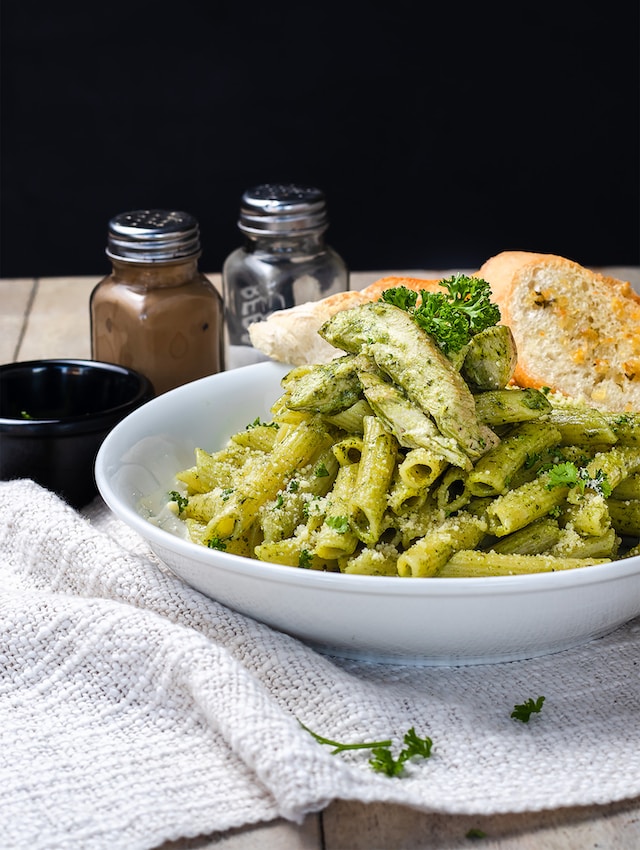
Wine and Italian Cuisine
Wine is an integral part of Italian cuisine, with each region boasting its own unique wine varieties that complement the local dishes. Here are some of the most famous wine regions in Italy and their signature varietals.
Tuscany
Tuscany is known for producing some of the world’s most renowned red wines, such as Chianti, Brunello di Montalcino, and Vino Nobile di Montepulciano. These wines are made from Sangiovese grapes and are known for their full-bodied flavors and tannins, making them perfect for pairing with rich meat dishes.
Piedmont
Piedmont is famous for its Barolo and Barbaresco wines, both made from the Nebbiolo grape. These full-bodied red wines are known for their robust flavors, high tannins, and ageing potential, making them perfect for accompanying rich meat dishes like beef and game.
Veneto
Veneto is the birthplace of Prosecco, a sparkling wine that has become increasingly popular around the world. Prosecco is made from the Glera grape, and its light, refreshing flavors make it an excellent complement to seafood dishes and desserts.
Sicily
Sicily is the largest island in the Mediterranean, and its wine industry has been growing in recent years. The Nero d’Avola grape is the most commonly used grape variety in Sicily, producing full-bodied red wines with rich and intense flavors.

When it comes to pairing wine with Italian cuisine, there are a few general rules to follow. Red wines are typically paired with meat dishes, while white wines are best served with lighter dishes like seafood and salads.
However, the most important thing to consider when pairing wine with food is to choose a wine that will complement the flavors of the dish.
In addition to wine, Italian cuisine also boasts a range of cocktails and digestifs that are perfect for rounding out a meal. Here are some of the most famous Italian digestifs:
Limoncello
Limoncello is a sweet and tangy lemon liqueur that is often served as a digestif after meals. It is made from the zest of lemons, sugar, and alcohol, and is known for its refreshing flavor.
Grappa
Grappa is a potent grape-based spirit that is distilled from the leftovers of the winemaking process, like stems and skins. It is typically served after meals as a palate cleanser and digestive aid.
Amaro
Amaro is a bitter liqueur that is made from a blend of herbs, roots, and spices. It is typically served as a digestif after meals and is known for its digestive properties.
No matter which wine or digestif you choose, the key to enjoying Italian cuisine is to savor each dish and take your time to appreciate the flavors and aromas of the food and drink. With its emphasis on fresh and high-quality ingredients, Italian cuisine is a culinary adventure that is sure to tantalize your taste buds and leave you feeling satisfied and content.
Cooking Techniques and Tips
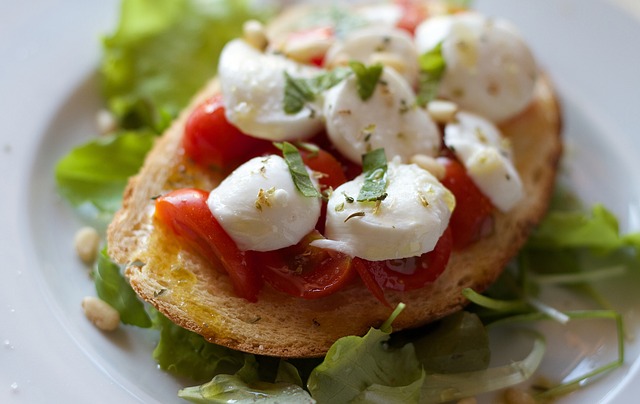
Italian cuisine is all about simplicity and letting the natural flavors of the ingredients shine through. To achieve this, it’s important to use fresh, high-quality ingredients and employ classic cooking techniques that showcase their flavors.
Here are some common Italian cooking techniques to master:
Sautéing: Sautéing involves cooking ingredients in a small amount of fat over high heat. This technique is commonly used for vegetables and meats in Italian cuisine.
Braising: Braising is a slow cooking method that involves cooking meat or vegetables in liquid over a low heat. This technique is perfect for creating tender and flavorful meat dishes like Osso Buco.
Grilling: Grilling is a quick and easy cooking method that works well for meats and vegetables. When grilling, it’s important to use high-quality ingredients and seasonings.
Roasting: Roasting is a dry cooking technique that is great for meats, vegetables, and even fruits. This method involves cooking food in a hot oven, which allows for caramelization and brings out the natural flavors of the ingredients.
To achieve authentic Italian flavors, it’s important to use the right ingredients and techniques. Here are some tips for creating classic Italian dishes:
Use fresh, high-quality ingredients: Quality ingredients are the foundation of Italian cuisine. Use fresh herbs, olive oil, high-quality cheeses, and meats to create the authentic flavors of Italian dishes.
Keep it simple: Italian cuisine is all about simplicity. Focus on creating simple dishes with natural flavors, and avoid adding too many ingredients that can overpower the dish.
Be patient: Many Italian dishes require slow cooking and simmering to develop flavors. Don’t rush the process and let the dish cook thoroughly to achieve the best results.
Experiment with regional specialties: Each region of Italy has its own unique culinary traditions. Experiment with regional specialties to discover new and exciting flavor combinations.
Italian cuisine is a treasure trove of delicious flavors and aromas that has captured the hearts and taste buds of people around the world. From the rich and creamy pasta dishes to the savory seafood recipes, Italian cuisine’s versatility and appeal continue to mesmerize food enthusiasts worldwide. With its emphasis on fresh and high-quality ingredients, traditional cooking techniques, and regional specialties, Italian cuisine offers a gastronomic journey filled with authentic flavors and timeless recipes that are sure to satisfy every taste bud. Buon Appetito!
